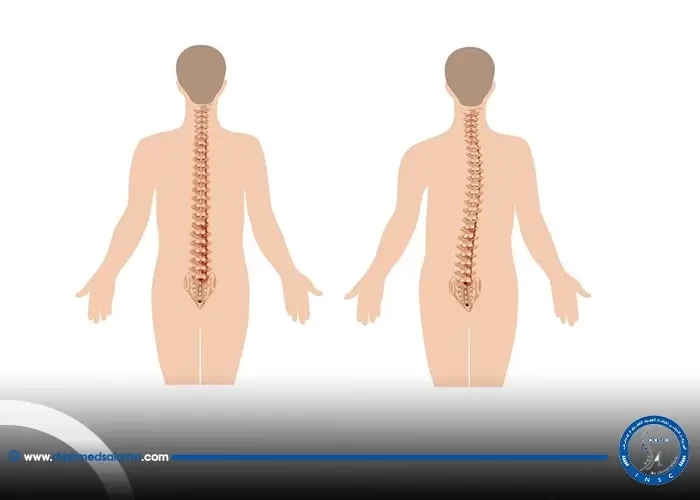Nasr City, 52 El Tayaran Street, in front of the Health Insurance Hospital

The difference between a brain hemorrhage and a brain stroke

What is the difference between a brain hemorrhage and a stroke?
The difference between a brain hemorrhage and a stroke is not limited to the cause, but also includes symptoms, treatment methods, and emergency medical care for each case. While a stroke occurs as a result of a blocked blood vessel, a hemorrhage results from the rupture of a blood vessel within the brain, leading to blood leakage and pressure on brain tissue. Both conditions can be life-threatening if not treated immediately. Therefore, understanding the differences between them helps speed diagnosis and improve the chances of survival and recovery. In this article, we will learn about the difference between a brain hemorrhage and a stroke, explaining the distinguishing signs of each and the most important methods of prevention and treatment, based on the experience of Dr. Ahmed Ibrahim Salama, a consultant neurosurgeon and spine surgeon.
The Difference Between a Brain Hemorrhage and a Stroke
When discussing the difference between a brain hemorrhage and a stroke, it is important to realize that both conditions are considered serious neurological problems, but they differ in their causes and symptoms. In general, a brain hemorrhage is a type of stroke, but it occurs when a blood vessel in or around the brain bursts, causing blood to leak and press on brain tissue. A stroke, on the other hand, results from a blocked blood vessel, preventing blood flow to parts of the brain.
Details about Endoscopic Carpal Nerve Decompression
Don't let time pass if you experience any unusual symptoms related to a brain hemorrhage or stroke. With Dr. Ahmed Salama, you will receive specialized medical care that focuses on every detail of your health condition. Thanks to his extensive experience, you can receive an accurate diagnosis and effective treatment to ensure the best chances of recovery.
The Difference Between a Brain Hemorrhage and a Stroke: Learn the Symptoms, Causes, and Treatment Methods
The difference between a brain hemorrhage and a stroke is one of the most important concepts everyone should know, given the similarity of their symptoms and the seriousness of their impact on human life. A brain hemorrhage occurs when a blood vessel in the brain ruptures, leading to blood leakage into brain tissue. A stroke, on the other hand, results from a blocked blood vessel, preventing blood flow to part of the brain. Both conditions require prompt diagnosis and immediate treatment to avoid serious complications such as loss of neurological function or death. In this article, we will explore the key differences between a brain hemorrhage and a stroke, how to recognize the early symptoms of each, and the latest effective treatment methods that can save your life or the life of a loved one.
Brain Hemorrhage Procedure
What is a Brain Hemorrhage?
A brain hemorrhage is a medical emergency that occurs when blood leaks from blood vessels in the brain, causing damage to surrounding tissue. The difference between a brain hemorrhage and a stroke is that a brain hemorrhage occurs when a blood vessel ruptures, while a stroke occurs when a blocked blood vessel interrupts blood flow to the affected parts of the brain. A brain hemorrhage can result from many causes, such as high blood pressure or direct brain injury. Symptoms include a sudden, severe headache, weakness or numbness in parts of the body, and difficulty speaking or seeing.
What is a Stroke?
A stroke, also known as a cerebral infarction, occurs when blood flow to part of the brain is disrupted due to a blocked or ruptured blood vessel. The difference between a cerebral hemorrhage and a stroke is that a stroke is usually caused by a blocked blood vessel, while a cerebral hemorrhage results from a ruptured vessel. A stroke requires immediate treatment to minimize permanent damage. Symptoms include sudden weakness in the face, arm, or leg; difficulty speaking or understanding; and loss of balance or coordination.
Symptoms of a Mini-Stroke
A mini-stroke may present with less severe symptoms than a full-blown stroke, but it requires immediate attention and treatment. If you notice any of the following symptoms, you should consult a specialist immediately. Symptoms of a mini-stroke include:
Sudden numbness or weakness on one side of the body, especially in the face, arms, or legs.
Sudden difficulty speaking or understanding speech.
Difficulty walking or loss of balance.
Although symptoms may be mild at first, a stroke can progress quickly and cause permanent damage if immediate medical intervention is not sought.
Symptoms of a Mini-Brain Hemorrhage
In the case of a mini-brain hemorrhage, symptoms appear suddenly and are usually more severe than those of a stroke. Common symptoms include:
A sudden, very severe headache, often the worst headache you've ever experienced.
Sudden nausea and vomiting.
Disturbed vision or consciousness.
A brain hemorrhage can occur as a result of a rupture of a blood vessel in the brain due to high blood pressure or direct trauma. It is important to note that a brain hemorrhage can occur suddenly, and symptoms may be more severe, requiring immediate medical intervention.
By thoroughly understanding the symptoms associated with the difference between a blood hemorrhage and a stroke, a doctor like Dr. Ahmed Ibrahim Salama, a consultant neurosurgeon and spine surgeon, can determine the correct diagnosis and take appropriate medical measures to effectively treat these conditions.
Do you have a question about the difference between a brain hemorrhage and a stroke? Book an appointment now with Dr. Ahmed Ibrahim Salama to receive comprehensive answers.
Lumbar Spinal Canal Dilation
The Difference Between a Brain Hemorrhage and a Stroke
The difference between a brain hemorrhage and a stroke is a medical topic that requires a thorough understanding of the mechanism by which each occurs. A brain hemorrhage occurs when blood vessels in the brain rupture and blood leaks into the surrounding brain tissue, leading to increased intracerebral pressure and tissue damage. A stroke occurs when blood flow to a part of the brain is interrupted due to a blocked blood vessel, leading to a lack of oxygen and nutrients to that part of the brain, causing damage.
Endoscopic Hand Nerve Decompression
Causes of Bleeding and Stroke
The primary cause of a brain hemorrhage is often the rupture of a blood vessel due to factors such as high blood pressure or traumatic injuries, while a stroke results from the blockage of a brain artery due to a blood clot or the accumulation of fatty deposits within the vessels (atherosclerosis). In the case of a stroke, the blockage may be caused by the accumulation of fatty plaques or a blood clot, while a brain hemorrhage is more commonly associated with blood vessel problems such as aneurysms or high blood pressure.
Cost of Scoliosis Surgery in Egypt
Symptoms, Diagnosis, and Treatment
Symptoms of a brain hemorrhage and a stroke can sometimes be similar, such as sudden headaches, loss of consciousness, or weakness in the extremities. The main difference, however, lies in how the symptoms appear: a brain hemorrhage occurs suddenly and severely, while the symptoms of a stroke may develop gradually, with the patient experiencing weakness or gradual paralysis in one part of the body or speech problems. In terms of treatment, a brain hemorrhage requires rapid treatment to stop the bleeding and limit the damage, while treatment in the case of a stroke aims to restore blood flow to the brain through medications such as clot dissolvers or surgical operations.
What is the recovery rate from a brain hemorrhage?
When discussing the difference between a brain hemorrhage and a stroke, we must also consider whether a brain hemorrhage can be recovered after suffering one, as this condition is considered a critical medical condition that requires immediate intervention. A brain hemorrhage is a bleeding that occurs within or around the brain and can result from a number of causes, such as high blood pressure, injuries, or blood vessel disorders.
The recovery rate from a brain hemorrhage depends on several factors, most notably:
Location of the hemorrhage: The closer the hemorrhage is to a vital brain area, such as the cerebellum or brainstem, the more difficult it is to recover.
Size of the hemorrhage: Larger hemorrhages cause greater pressure on the brain, leading to more serious damage.
Age and general health: Younger people and those without chronic conditions have a greater chance of making a full recovery.
Rapid medical intervention: Early treatment and proper diagnosis play a significant role in increasing the recovery rate. The sooner the hemorrhage is treated, the better the chances of recovery.
According to statistics, the overall recovery rate from a brain hemorrhage ranges between 40% and 70% of cases, depending largely on the factors mentioned. In some cases, surgical interventions may be required, such as removing the accumulated blood or repairing damaged blood vessels. However, if the hemorrhage is detected and treated early, the chance of recovery can be much better.
By understanding the difference between a brain hemorrhage and a stroke, doctors, such as Dr. Ahmed Ibrahim Salama, Consultant Neurosurgeon and Spine Surgeon, can accurately assess the patient's condition and determine the best treatment options based on the type and severity of the hemorrhage.
Complete details about herniated discs in the fifth and sacral vertebrae
Causes of Brain Hemorrhage and Stroke
When discussing the difference between a brain hemorrhage and a stroke, the primary causes of each must be considered, as stroke and brain hemorrhage follow different mechanisms that lead to their occurrence.
Causes of Stroke
A stroke occurs when a blood vessel that supplies blood to the brain is blocked. This blockage can occur as a result of:
Atherosclerosis: This narrows the blood vessels and reduces blood flow to the brain.
Blood clot: This can form in the heart due to an irregular heartbeat (atrial fibrillation) and travel to the brain.
Smoking and excessive alcohol consumption: Smoking and excessive alcohol consumption can increase the risk of stroke.
High blood pressure: High blood pressure can damage blood vessels in the brain and increase the risk of stroke.
Genetic diseases: Some genetic conditions may increase the likelihood of blood clots, leading to stroke.
Causes of a brain hemorrhage
A brain hemorrhage occurs when a blood vessel in or around the brain bursts. The main causes include:
Uncontrolled high blood pressure: This can lead to a blood vessel rupture.
Arteriovenous malformation (AVM): This weakens the walls of blood vessels, making them more susceptible to rupture.
Aneurysm: This occurs when blood vessels expand abnormally, increasing the risk of rupture.
Use of anticoagulant medications: This may increase the risk of bleeding.
Drug abuse: Such as cocaine, which weakens blood vessel walls and makes them more susceptible to rupture.
Want to learn more about the difference between a brain hemorrhage and a stroke? Consult Dr. Ahmed Ibrahim Salama to assess your condition and determine the most appropriate treatment.
Diagnosing a Brain Hemorrhage and Stroke
When discussing the difference between a brain hemorrhage and a brain stroke, diagnosis is vital and essential in determining the type of condition and initiating appropriate treatment. The diagnostic process includes a series of advanced medical tests that help doctors determine the extent of damage caused by the hemorrhage or stroke and pinpoint the exact location of the injury. Basic tests for diagnosing a brain hemorrhage and stroke include:
Medical history and physical examination: The doctor reviews the patient's symptoms and medical history, as well as examining neurological signs such as numbness or weakness in the extremities.
Computed tomography (CT) scan: This is one of the most common tests used when a brain hemorrhage or stroke is suspected. A CT scan can reveal the presence of bleeding and pinpoint its location in the brain.
Magnetic resonance imaging (MRI): This scan provides more detailed images of the brain and helps determine the type of stroke or hemorrhage more accurately.
Cerebral Angiography: This test helps analyze blood flow in the blood vessels of the brain, enabling doctors to detect any vascular problems such as aneurysms or ruptures.
With an accurate diagnosis, doctors like Dr. Ahmed Ibrahim Salama, Consultant Neurosurgeon and Spine Surgeon, can provide the most effective treatment based on a precise diagnosis of the type of hemorrhage or stroke, thus increasing the chances of a full recovery.
Preventing Brain Hemorrhage and Stroke
Prevention plays a pivotal role in avoiding both brain hemorrhages and strokes, especially since both are linked to largely controllable factors. Because the difference between a brain hemorrhage and a stroke includes a different cause (a blood vessel rupture in a hemorrhage versus a blocked vessel in a stroke), prevention methods cover both aspects and include:
Control blood pressure: Chronic high blood pressure is one of the most important causes of brain hemorrhages.
Maintain a healthy weight: Obesity increases the risk of high blood pressure and diabetes, which increases the risk of strokes and bleeding.
Follow a balanced lifestyle: Quit smoking, eat a healthy diet, and engage in physical activity.
Injury Prevention: Wearing a seatbelt and helmet reduces head injuries.
Senior Safety: Eliminating Fall Risks at Home to Prevent Brain Injuries.
Are you experiencing unusual symptoms and want a diagnosis that clarifies the difference between a brain hemorrhage and a stroke? Contact Dr. Ahmed Ibrahim Salama for an accurate diagnosis and effective treatment.
Does a person return to normal after a brain hemorrhage?
When understanding the difference between a brain hemorrhage and a stroke, we recognize several factors that affect the ability to return to normal life after the injury, such as the extent of the condition's impact on the brain and the time elapsed before treatment. While some patients may fully recover, others may experience lasting effects that require ongoing rehabilitation and care.
Rehabilitation and Recovery
Rehabilitation plays a key role in helping patients cope with the effects that may remain after a brain hemorrhage. Rehabilitation programs can help patients regain the ability to perform daily activities safely and effectively. These programs include:
Physical Therapy: To improve motor coordination and muscle strengthening.
Occupational Therapy: To help patients regain the ability to perform basic daily activities.
Psychological and mental strategies: To improve coping with the psychological and mental effects that may result from the injury.
When does the risk of a brain hemorrhage patient cease?
The risk for a brain hemorrhage or stroke patient continues during the first weeks after the injury, requiring careful medical care and immediate treatment to minimize complications. Once the condition stabilizes and major complications are absent, the risk gradually decreases. At this stage, the patient begins rehabilitation programs to improve motor and mental abilities. However, continued medical follow-up is still necessary to ensure that long-term effects or future complications do not occur.
In conclusion, we discussed the difference between a brain hemorrhage and a stroke. Although both share serious effects on the brain and human health, they differ in their causes and symptoms. While a brain hemorrhage results from the rupture of a blood vessel, a stroke results from the blockage of a blood vessel. Both conditions require early diagnosis and prompt treatment to minimize risks and complications. If you suspect similar symptoms, do not hesitate to consult a specialist like Dr. Ahmed Salama, who offers his expertise in diagnosing and treating these conditions to ensure the best healthcare.
Is a brain hemorrhage a stroke?
A brain hemorrhage is not the same as a stroke. A stroke occurs when a blood vessel in the brain becomes blocked, preventing blood flow, while a brain hemorrhage occurs when a blood vessel inside or around the brain bursts, leaking blood and damaging brain tissue.
What does a patient with a brain hemorrhage feel?
A patient with a brain hemorrhage may experience symptoms such as a sudden, severe headache, nausea and vomiting, weakness or numbness in a limb, difficulty speaking or understanding speech, and loss of balance. A change in level of consciousness or confusion may also occur.
Does a person return to normal after a brain hemorrhage?
Mild cases: May not leave any permanent damage, with the patient returning to a full normal life within a few weeks. Moderate cases: May require longer recovery time, with the possibility of some permanent disabilities.






